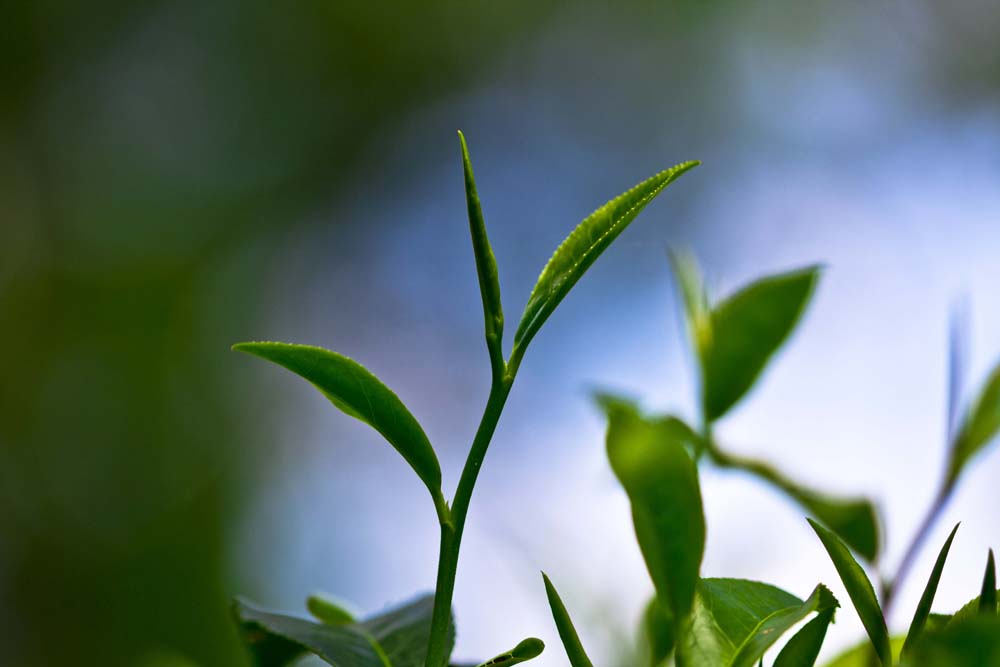Indian Tea
Since 1852 approximately 80 tea gardens have been producing a tea unique to this region. The region sits in the shadow of the mighty Himalayas. Only here do the exact temperatures and soil conditions work their magic on the Camellia Sinensis plant (the China hybrid known as China Jat variety). If this same variety of plant is replanted anywhere else it will fail to produce the same flavor as the Champagne of Teas. There are three distinct manufacturing periods for this tea:
· First Flush
· Second Flush
· Autumn Flush
Each pound of fine tea consists of more than 9,000 individually hand plucked shoots! Top grade First and Second Flush Darjeeling’s will bring some of the highest prices found at the Kolkata tea auctions. Many will not make it to auction because international buyers will pay top dollar, euro or yen for the best offerings.
Looking over the lush remote valleys and tea-carpeted mountain slopes, these serene vistas disguise the fact that the tea gardens of Darjeeling are often in a struggle to survive. Aging gardens and counterfeit “Darjeeling” teas are the two main problems facing this 150-year-old industry.
The Tea Board of India has taken strong steps to protect the name and authenticity of Darjeeling by receiving the Geographical Indications of Goods (Registration & Protection Act, 1999) in 2003, Darjeeling tea became the first Indian product to receive a GI tag through the Indian Patent Office.
Assam Tea
Assam produces a full-bodied strong tea with a musky, strong bright color and a somewhat astringent taste that takes well to milk and sugar. It is grown from the Camellia Sinensis var. assamica. Assam is the birthplace of tea in India and grows in the lowlands unlike Darjeeling and Niligiri. The tea estates produce both CTC and orthodox style teas. Some of the finest teas in the world are grown in Assam.
Assam is a northeastern state of India with its capital at Guwahati. Located south of the eastern Himalayas, Assam comprises the Brahmaputra and the Barak River valleys and the Karbi Anglong District and the North Cachar Hills. Assam is surrounded by the other six of the Seven Sister States: Arunachal Pradesh, Nagaland, Manipur, Mizoram, Tripura and Meghalaya. These states are connected to the rest of India via a narrow strip in West Bengal called the Siliguri Corridor. Assam also shares international borders with Bhutan and Bangladesh; and cultures, peoples and climate with South-East Asia. This beautiful region is also home to tropical rainforests along with grass lands, bamboo orchards and numerous wetland ecosystems. The Kaziranga and Manas regions have been named World Heritage Sites. The Kaziranga is the home for the rare Indian rhinoceros, while Manas is a tiger sanctuary.
The single largest tea growing region in the world created the first tea company in the world, the Assam Tea Company. During British explorations in the 1800s there was a rumor that a preparation of tea leaves was being prepared as a drink by local tribes. British explorer Major Robert Bruce discovered this to be true when he found large areas of wild-growing tea trees. Although he died in 1825, his brother Major C.A. Bruce eventually convinced the British authorities that the plant was native to Assam and that it was a variety of Camellia Sinensis.
Chai, the popular spicy Indian drink, is often made with tea from Assam and Assam tea is regularly used for the breakfast type teas (e.g., English Breakfast, Irish Breakfast). Assam is producer today of the largest quantity of tea in India, both premium and mass-market quality.
Nilgiri
Nilgiri means Blue Mountain and is located in the southern Indian region state of Tamil Nadu. Nilgiri’s refers to the mountain range that spans Tamil Nadu, Karnataka and Kerala. These mountains are part of the Western Ghats of India. Both tea and coffee are the largest crops grown in this agricultural belt of India, while the region is also home to the largest number of wild elephants in the subcontinent and one of the most important wild tiger habitats. Mudumalai Park and Mukurthi National Park form the nucleus of the Nilgiri Biosphere Reserve.
Tea planting began in the mid 1800s in the Nilgiri’s. Nilgiri has a year round plucking cycle unlike that of Darjeeling and Assam. Niligiri teas are being used to create many different blends of teas around the world. Tea from the Nilgiri’s are fragrant and brisk in character. The Nilgiri tea plantations produce about ten percent of the tea grown in India. The tea is low in tannins and brews a delicious iced tea as well.

